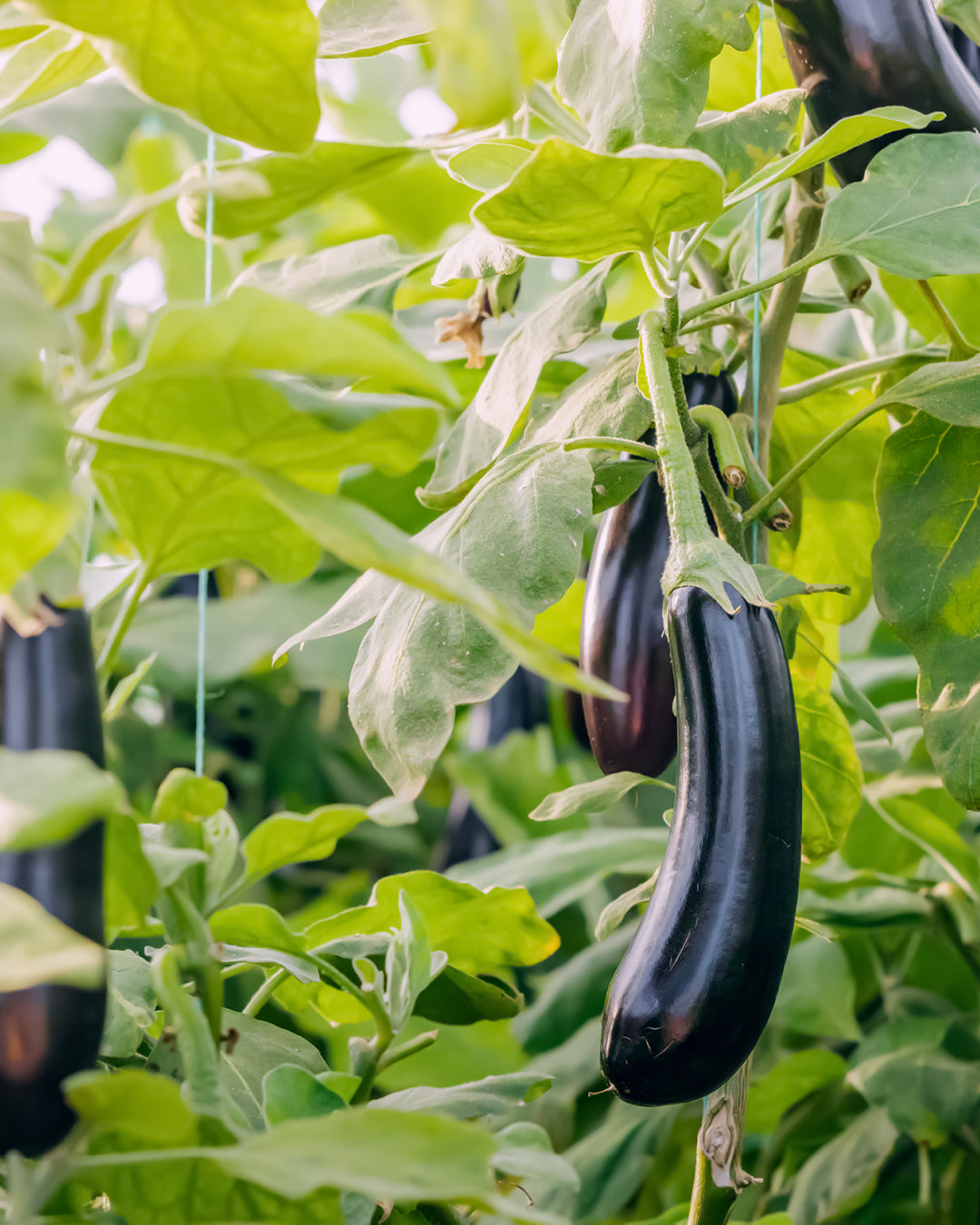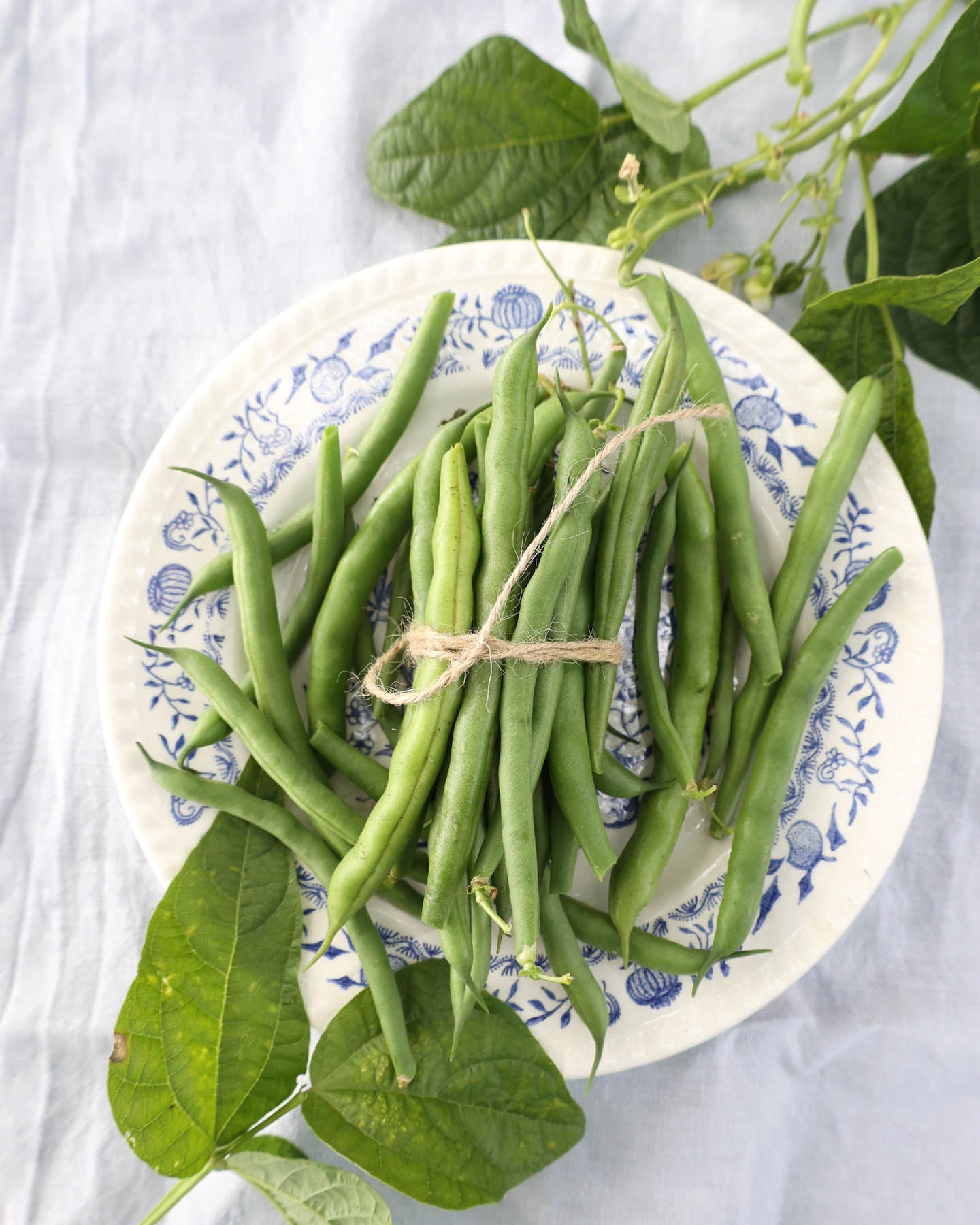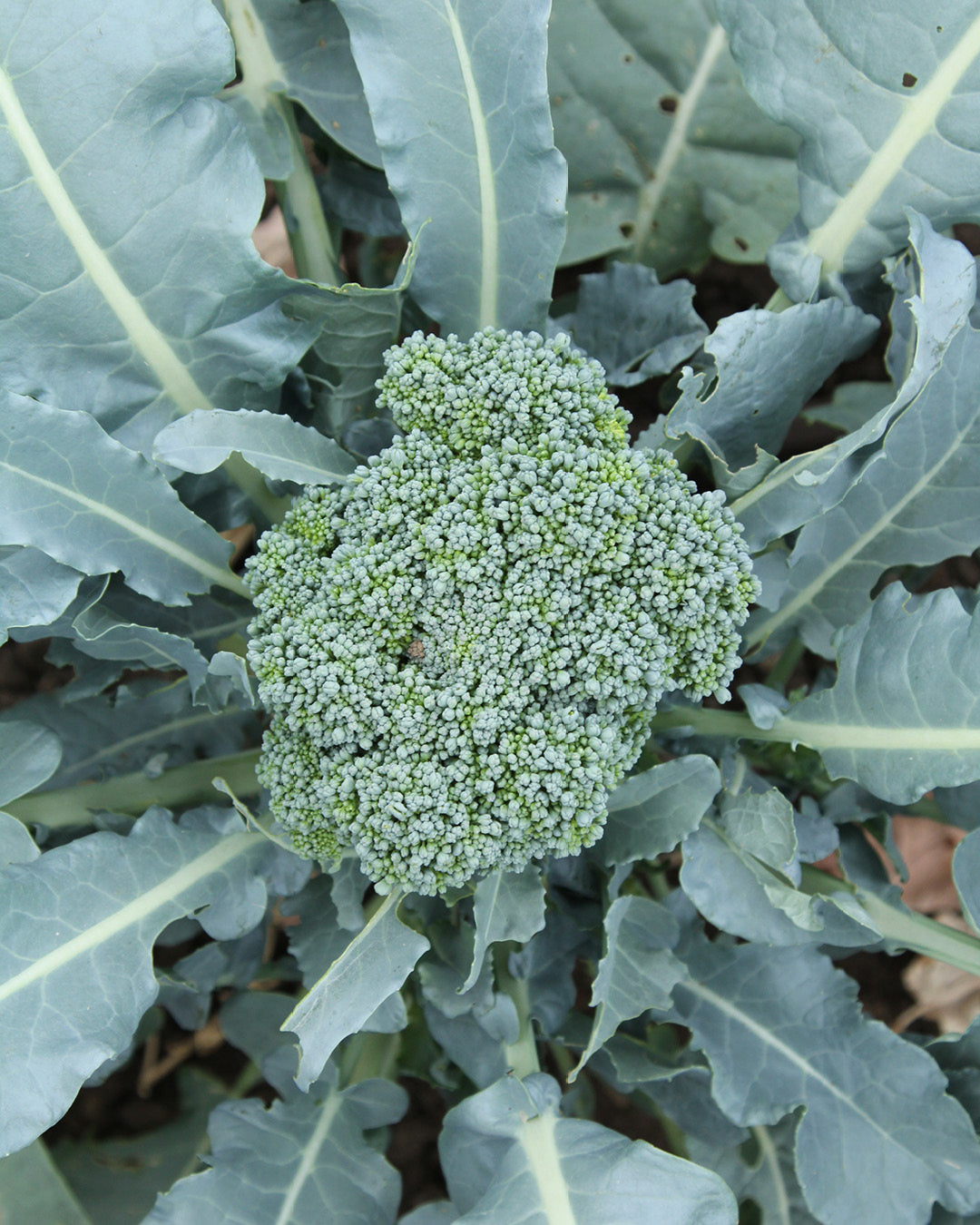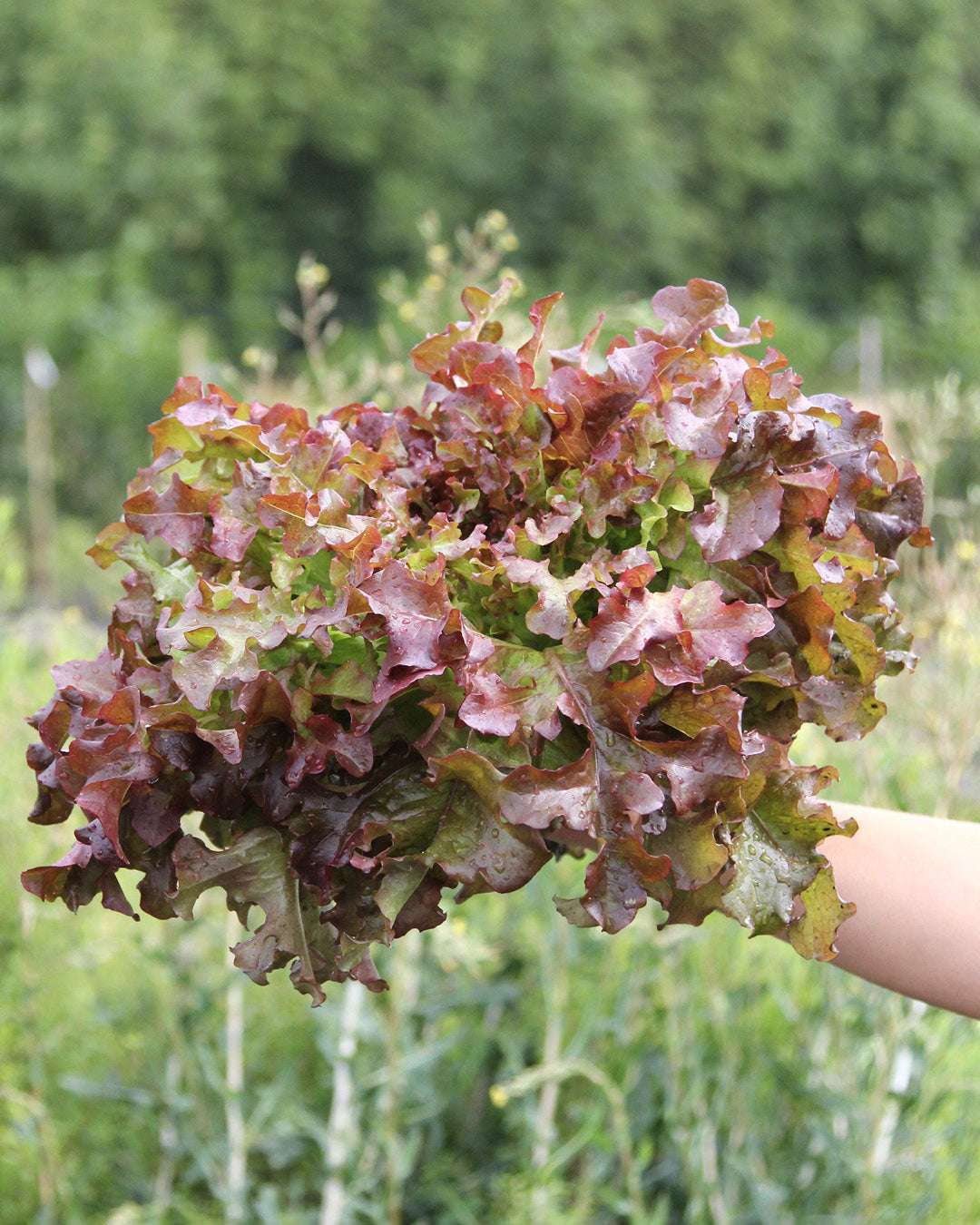Planting, caring for and harvesting peas (Pisum sativum) – Tips for sugar, marker and pale peas in the garden
Peas are among the most popular and easy-to-grow legumes for the home garden. The tender, sweet seeds can be eaten straight from the bush, cooked fresh, or easily frozen. Pisum sativum, a member of the legume family, offers a wide variety of varieties – from crunchy mangetout to classic garden peas to dry peas. Choosing the right variety, combined with the regional climate and soil conditions, is crucial for a bountiful harvest. In this article, you'll learn everything you need to know about cultivation, care, harvesting, and variety selection – for sweet pea delights from your own garden.
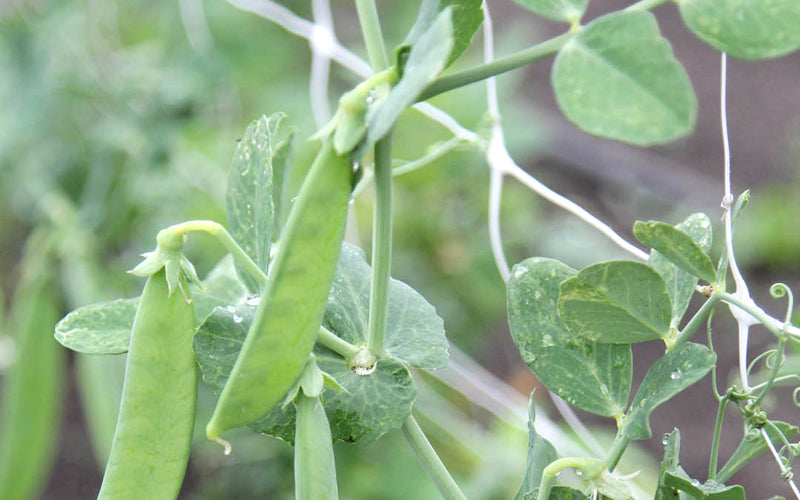
Planting time – When is the right time?
The sowing time for peas depends heavily on the region and climate. In mild, warm locations, early varieties can be sown as early as October or November. In most gardens, however, the main sowing season begins in March and can continue into June. It's important that the soil is no longer too wet and not frozen – peas germinate best at temperatures between 8 and 15 degrees Celsius.
Growing peas – How it works in the garden
For sowing, seed furrows are created approximately 5 centimeters deep. The seeds are scattered into the furrows at a distance of 2 centimeters, with row spacing approximately 40 centimeters. For tall, climbing pea varieties such as mangetout or sweet peas, support is essential. Hazel rods, brushwood, or special trellises placed along the furrows are suitable for this purpose.
Bird netting is particularly useful during the early stages of development, as pigeons and other birds like to peck at the young seedlings. However, the netting should be removed promptly to prevent the plants from becoming entangled in it. To improve stability, it is recommended to lightly mound the young pea plants – this protects them from wind and stabilizes the roots.
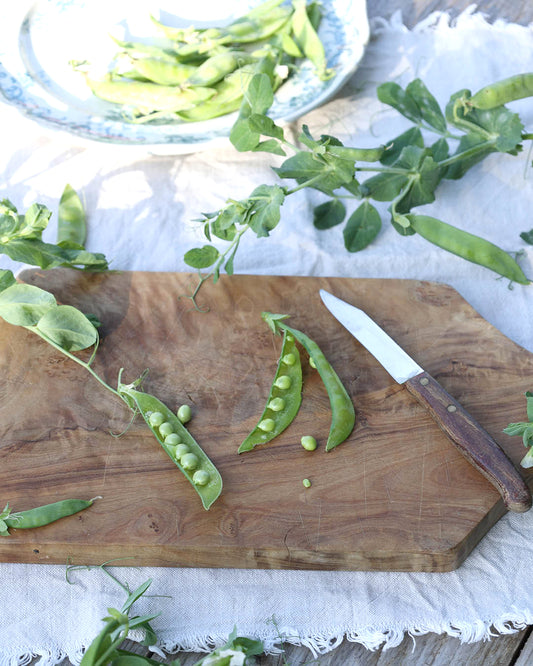
Sugar pea 'Ambrosia' - Pisum sativum
'Ambrosia' is an easy-care, medium-early sweet pea with a good yield. It is sturdy and therefore requires no trellis support.
Their medium-sized, light-green pods have an intensely sweet flavor. They can be harvested very young, just when the small fruits are beginning to appear inside the pod. The peas that develop later are medium-sized and particularly sweet.
After harvesting, the pods should be processed promptly to prevent bitter substances from forming.
Our high-quality organic vegetable seeds are grown according to the strictest organic standards for a sustainable and healthy harvest.
Details:
Sowing outdoors: early April to July
Germination time: 10-20 days at 10-18°C
Sowing depth: 3-5 cm, dark germinator
Height: 70 cm
Planting distance: 30-45 x 3 cm
Harvest time: end of May to October
Soil: humus, loose, moist
Fertilization: not necessary
Location: Sun
Water consumption: Medium
Growing tips:
Peas have low soil requirements and thrive even in poor locations. However, loose, fine-crumbly soil is best. Fertilization before sowing is not necessary. For the peas to swell and germinate evenly, it is important that the soil is consistently moist and regularly loosened. Harvest the pods continuously to ensure the plant continues to flower.
After harvesting, the plant should be cut above the roots and its roots should be left in the soil, as they enrich the soil with nitrogen as they decompose.
Mixed culture:
Good neighbors: dill, fennel, cabbage, cucumbers, carrots
Bad neighbors: beans, onions, garlic
Use:
Use the pods raw, cooked, or freeze them. They make a wonderful snack straight from the vine and are also very popular with children. The peas themselves are also a tasty vegetable.
Bag contents:
approx. 16 grams
Store in a cool, dry place.
Location – What do peas like?
Peas thrive in a sunny, airy location with loose, well-drained soil. Light to medium garden soils that are fresh and not too moist are ideal. As so-called low-nutrient feeders, peas require very few nutrients – a little mature compost is perfectly sufficient. Fresh, organic fertilizer or the application of lime should be avoided, as the plants are sensitive to these and will then produce an excessive number of leaves instead of fruit.
Care – What should you consider when growing peas?
Peas are generally easy to care for. A consistent, but not excessive, water supply is important, especially during flowering and pod formation. Waterlogging or persistently wet soil can quickly lead to rot. Fertilization is generally not required—if the soil was well prepared the previous year or composted, this is perfectly sufficient.
Harvest – When are peas ripe?
Depending on the variety and sowing time, harvesting can begin in May or June. Peas should be harvested young, while the grains are still soft and sweet. Snow peas can be eaten with the pods, while marrow and pea flakes are hulled and used either fresh or dried.
The pods are harvested with your fingers or scissors. Regular harvesting prolongs fruit production. The pods are best picked in the morning when they are still cool and plump.
Mixed culture – Which neighbors go well with peas?
Peas combine excellently with carrots, radishes, cucumbers, cabbage, lettuce, and corn. They can also be combined with marigolds or marigolds to keep pests at bay. Peas do not mix well with other legumes such as beans or with bulbous plants such as garlic, leeks, and onions.
Variety tips – Which peas are suitable for the garden?
- Kleine Rheinländerin: classic garden pea, robust and productive
- Delikata: sweet sugar pea with tender pods, good for fresh harvest
- Pale pea 'Blauwschokker': decorative variety with purple pods, suitable for drying
- Norli: early, low-growing sugar pea, ideal for small beds
Botany – What kind of plant is the pea?
Pisum sativum belongs to the legume family and is an annual plant. The plant forms pinnate leaves and branched tendrils with which it clings to supports. Depending on the variety, it grows between 30 centimeters and over one meter tall. The characteristic butterfly-shaped flowers are usually white or pinkish-purple and develop into pods containing several pea seeds.
Cultural history – How did the pea come into our gardens?
The pea is one of humanity's oldest cultivated plants and was already cultivated in the Neolithic period. It originates from the eastern Mediterranean and the Middle East. In the Middle Ages, it was a staple food in Europe. It became particularly well-known in the 19th century through the cross-breeding experiments of Gregor Mendel, who used peas to lay the foundations of modern genetics. Today, it is widely used not only in agriculture but also in home gardens – not least because of its easy care and the sweet taste of its fresh grains.

